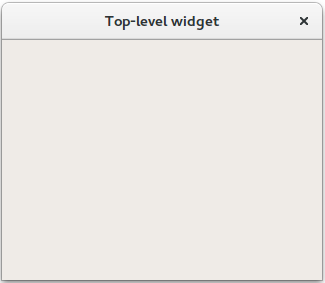Widgets Tutorial - Creating a Window
If a widget is created without a parent, it is treated as a window, or top-level widget, when it is shown. Since it has no parent object to ensure that it is deleted when no longer needed, it is up to the developer to keep track of the top-level widgets in an application.
In the following example, we use QWidget to create and show a window with a default size:
#include <QtWidgets> int main(int argc, char *argv[]) { QApplication app(argc, argv); QWidget window; window.resize(320, 240); window.show(); window.setWindowTitle( QApplication::translate("toplevel", "Top-level widget")); return app.exec(); } |  |
To create a real GUI, we need to place widgets inside the window. To do this, we pass a QWidget instance to a widget's constructor, as we will demonstrate in the next part of this tutorial.
© 2025 The Qt Company Ltd. Documentation contributions included herein are the copyrights of their respective owners. The documentation provided herein is licensed under the terms of the GNU Free Documentation License version 1.3 as published by the Free Software Foundation. Qt and respective logos are trademarks of The Qt Company Ltd. in Finland and/or other countries worldwide. All other trademarks are property of their respective owners.

